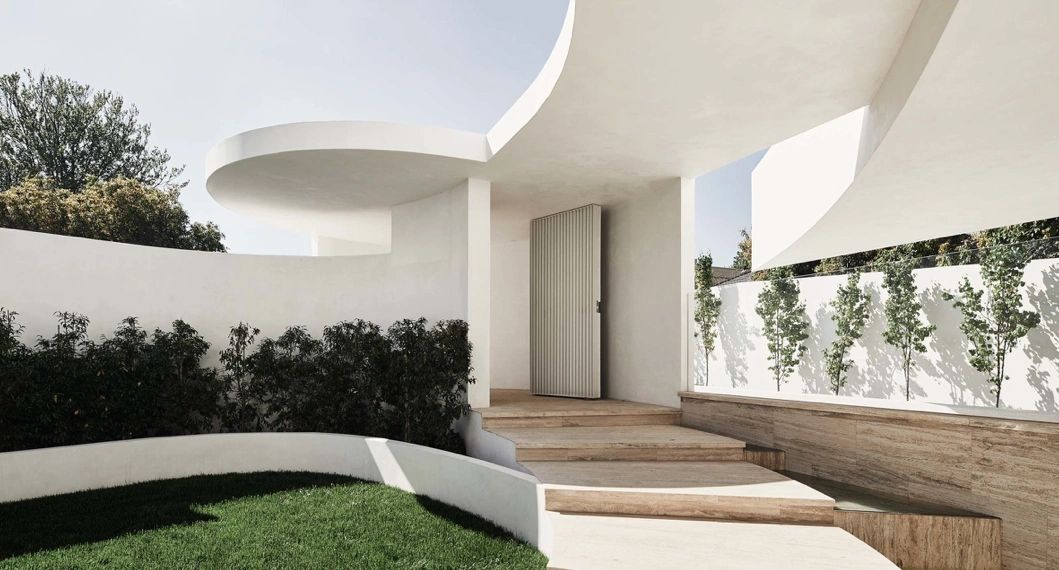Table Of Content

For example, in the kitchen illuminate with pendant lights, can lights, under-cabinet lighting, and standalone lamps for a full spectrum. But pay attention to light color, also called temperature, which is measured in 6500K, 4100K, and 2700K. It’s personal preference, but soft white, or 2700K, is a warm, natural light that’s best for most living spaces.
3 Nature of the Space
In larger parks, the refuge spaces under trees, and in vegetation bordering an open space or meadow, are the preferred locations (e.g., Ruddell & Hammitt, 1987). Though science has yet to establish metrics for frequency or duration of access to refuge conditions, the balance between Refuge and Prospect is suggested to be more important than the size or frequency of the experience (Appleton, 1996). Jay Appleton’s writing (1975, 1996) is focused on theory and is a good overall reference for both Prospect and Refuge, whereas Grant Hildebrand (1991) has written the most intelligently about Prospect and Refuge in the built environment and is a good reference for applications. In Grant Hildebrand’s words, “The edge of a wood is one of the most prevalent of natural prospect-refuge conjunctions” for it provides protection from weather and predators, but allows for outward surveillance. Nonetheless, the health response to Refuge is reportedly stronger than the response to Prospect, and the compounded response is enhanced when the two spatial conditions converge (Grahn & Stigsdotter, 2010).

Natural Material
By using the right ones, we could create a calming and serene place that can help us become more productive as well as more peaceful. If design doesn’t focus on aspects of the natural world that contribute to human health and productivity in the age-old struggle to be fit and survive, it’s not biophilic. Singapore has become famous as a biophilic city, with an abundance of green walls and roofs. The Jewel Changi Airport, with the world’s tallest indoor waterfall and a hedge maze, offers one of the city’s most famous biophilic designs. Biophilia describes our love of nature, innate connection to it and ultimate desire to emulate it.
Explaining Biophilic Design, Its Principles And Why it Matters
Porches and balconies offer more than just quaintness and real estate value; many suburban homes and urban rowhouses are raised 18 inches or more, creating a Prospect-Refuge condition with views from windows, stoops and porches. The potential human health benefits are undervalued in high-density settings where residential towers with balconies are both limited and only available to high-paying tenants. With the emergence of the green building movement in the early 1990s, linkages were made between improved environmental quality and worker productivity (7. Browning & Romm, 1994 ). While the financial gains due to productivity improvements were considered significant, productivity was identified as a placeholder for health and well-being, which have even broader impact.
This $15.385 Million Miami Spec Home Prioritizes Biophilic Design - Forbes
This $15.385 Million Miami Spec Home Prioritizes Biophilic Design.
Posted: Fri, 22 Mar 2024 07:00:00 GMT [source]
4 Nature-Health Relationships
By 2016, Koenig, who retired last year, was ready to take on the project of renovating not just the primary bathroom, but all three of the home’s bathrooms. She found interior designer Megan Siason, principal at M Studio, to take on the project. Siason asked her to sign up with the website Houzz and send her pictures of bathrooms or elements in bathrooms that she liked. Technology also makes it easy and inexpensive to bring nature sounds into your home. It’s as simple as asking your smart speaker to play forest sounds or ocean sounds or just about any natural auditory experience you can think of. We all know how relaxing the sound of nature can be, say from a flowing river or crackling fire.
A high quality intervention may be defined by the richness of content, user accessibility and, as mentioned above, diversity of strategies. A single high quality intervention can be more effective and have greater restorative potential than several low quality interventions. Climate, cost and other variables may influence or limit feasibility of certain interventions, but should not be considered an obstacle to achieving a high quality application.
Each context supports a platform for myriad opportunities for integrative biophilic design, and mainstreaming healthy building practices for people and society. Discussed here in brief are some key perspectives that may help focus the planning and design processes. Apart from decorating with living plants, you can achieve a similar effect by filling your home with textures, colors, and shapes that replicate those you might find in nature.
When planning the surfaces in your home, look to materials like stone, marble, or wood to inform choices about your furniture, countertops, or flooring. "Natural materials like marble and stained wood are at the core of our approachable design style." Curves, curves, curves—whether rounded mirrors, curved sofas, or bean-shaped tables and accents—are a good starting place for making your space feel more organic. "Use natural shapes in your spaces, such as curves, to make a space feel inviting and connected," says Lanteri. "In this space, we used curves in the main furniture pieces to make their main family room space feel easy to use with young children and also to entertain family and friends."
It’s undeniable that working or living somewhere with nature is better than the typical working environment. Too many individuals in our society feel anxiety and stress in their everyday lives. When individuals are surrounded by plants, hear calming sounds from nature and have fresh air coming in, they feel calmer and more at ease. As opposed to listening to the traffic noise outside and looking at boring walls. Biomimicry is a way to take ideas of how systems and individual elements work in nature and apply the same principles in our lives. Therefore it only makes sense to create more outdoor spaces for ourselves whether it is balconies, patios, or parks.
We asked these and other leading designers and architects for the best ways to bring biophilia home. Dupray Bloom Air Purifier is the perfect example of biophilic design that functions as decor and a wellness tool. If you're thinking about reupholstering a couch, choosing fabric for window treatments, or even deciding on pillow covers, keep natural elements in mind, like florals, leaves, and butterflies. "Newton Paisley designs tell the stories of endangered and neglected species, whilst rejoicing in their extraordinary diversity and beauty," says Lanteri, who used the brand's Carolina Monarch Linen to cover sofa cushions.
A space with a good Prospect condition feels open and freeing, yet imparts a sense of safety and control, particularly when alone or in unfamiliar environments. For example, the dappled light under the canopy of an aspen tree, or the reflections of rippling water on a wall. These patterns tend to be fractals, and the brain is attuned to moving fractals (see [P10] Complexity & Order). Dynamic & Diffuse Light leverages varying intensities of light and shadow that change over time to create conditions that occur in nature. A space with a good Presence of Water condition feels compelling and captivating.
Biophilic Design Is About Connecting With Nature—Here's How to Utilize the Décor Trend In Your Home - Martha Stewart
Biophilic Design Is About Connecting With Nature—Here's How to Utilize the Décor Trend In Your Home.
Posted: Sun, 21 Jan 2024 08:00:00 GMT [source]
"All roads lead back to natural light and creating moments to mimic that inside with shadows and expansive ceiling heights," says Kelsey Haywood, owner and principal designer of Haywoodmade Interiors. City-wide infrastructure can be designed biophilically, too, like when a city prioritizes green spaces, foot traffic, or community gardens. One of the earliest examples of intentional biophilic design was the Hanging Gardens of Babylon, rooftop gardens by the royal palace in ancient Babylon. It’s not just about how to create a building, it’s also about where to build it.
Employee wellbeing and performance directly impact the patient experience, and with over half of nurses reporting their mental and physical health as “suboptimal,” it is essential that healthcare facilities prioritize wellness and make choices that position staff for success. Thankfully, implementing biophilic design principles can postively impact caregivers and staff in addition to patients, facilitating stress recovery and fostering excellent performance. Biophilia has made a profound impact on the art world, reshaping the way artists conceptualize and create their works.

No comments:
Post a Comment